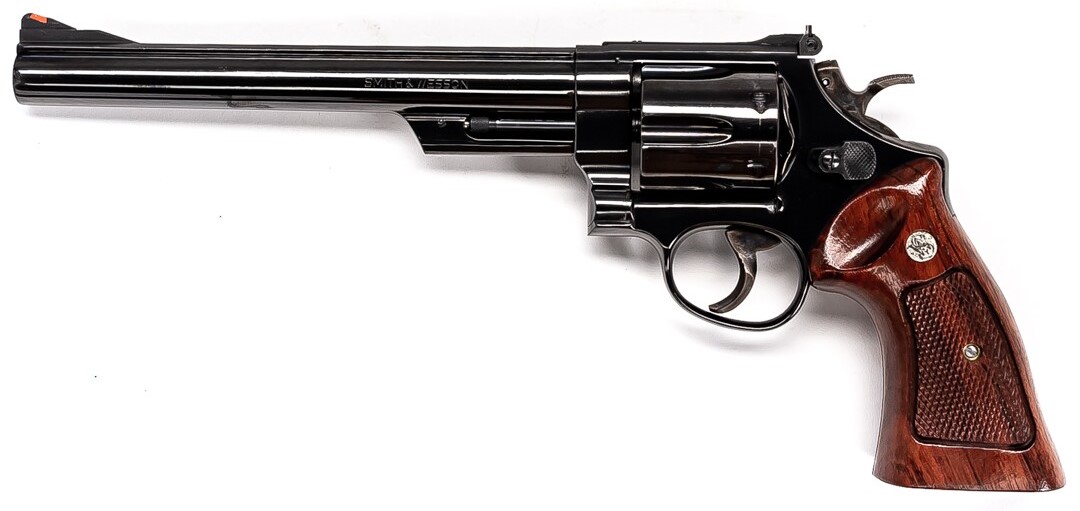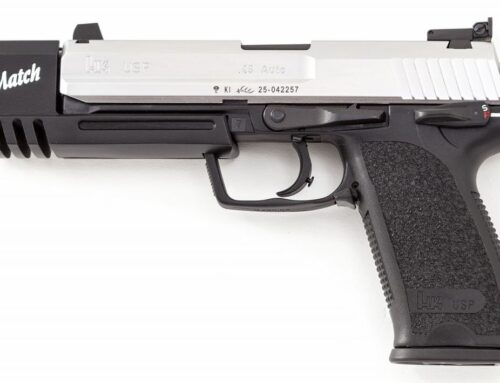“The most powerful handgun in the world.” In the early 70’s Clint Eastwood helped make history with one of cinema’s famous quotes being directly connected to a firearm which to this day retains its movie fame. From the onset both the .44 Magnum cartridge and the Model 29 had been a success fifteen years prior to the first Dirty Harry, though after reaching the big screen stores couldn’t keep this powerhouse of a wheelgun in stock.
From December of ’55 the first .44 Magnum firearms were produced but it wasn’t until some time in ’57 when Smith gave them the official Model 29 designation. With a capacity of six rounds and standard barrel lengths ranging from 3″ all the way to 10 5/8″ they’re nothing shy of giants which begin tipping the scales at around 40 ounces. They were available with polished blued or nickel plated finishes and had been regularly produced until the late 90’s. These days it occasionally shows up in limited or custom configurations well within its tenth evolution.
I was fortunate enough to get some hands-on time with a gorgeous polished blue model 29-2 which indicates it had been made between 1961 and 1982. With an 8 3/8″ barrel this already large N-frame revolver became almost comically massive, it would have dwarfed a Desert Eagle. The quality and craftsmanship easily came through compared to modern mass produced firearms which immediately set it apart as being worthy of its collector status.
I don’t know a whole lot about revolvers but one element which I have always preferred with the older ones is that the cylinder is recessed for these rimmed cartridges. In newer ones the back side of the cylinder is flat so the brass rims rest along the outside which creates a permanent gap between the cylinder and the frame. With something like this earlier 29 the back of the cartridges completely vanish with the cylinder and frame mating very closely together. The reason this is no longer the practice all comes down to manufacturing cost. When the 29-3 came out in 1982 the recessed cylinders were no more. In addition they switched from pinned barrels to crush-fit barrels which was another cost-saving measure.
All of the controls are exactly as one would expect from a classic Smith from cylinder lock-up to the trigger pull. Despite the massive barrel and plenty of heft it somehow had good balance and pointed well with an orange front sight blade and adjustable rear getting me on target. With the extra weight up front I had expected it to help tame the .44’s recoil and to some extent this seemed to hold true. The first three rounds I put through it were Magtech 240 grain soft points and they flew downrange with surprisingly little drama. I’ve fired six inch .357’s with more bite.
Then my world got turned inside out as I hit the first of a trio of JHP rounds. Unfortunately I do not know the specs of these other than they were factory loaded hollow-points but given that each shot shoved the barrel some forty degrees skyward I’m certain they were intended for hunting or defensive use. With eight inches of runway for a Magnum round to pick up velocity there was a stupendous amount of energy being sent downrange, it felt more like running a .500 than a .44! By the third round I had developed quite a flinch and had to stop, between the hot ammo and solid wooden grips my hand had more than enough for the day.
If you want some excitement in your range session a .44 can absolutely still deliver. If only I had some watermelons to annihilate!
Despite the smoothness of the finish and action there was one area of note which struck me as a little out of place. With revolvers the ejector rod runs straight through the cylinder and locks into the frame when closed, no surprises here. However, unlike every wheelgun which I’m familiar with, the back end of the 29-2’s rod was cut flat rather than rounded. A rounded pin creates less drag and leaves a smaller wear line across the finish, it’s an inexpensive addition which makes sense to do. I don’t know if during this era it wasn’t as common or if maybe Smith left some more material here due to the increased recoil but the results of this surface being cut at a right angle are what you would expect. The cylinder had increased drag when being swung and the dragline worn into the finish was much more pronounced. With all of the care given to every other aspect of this revolver I was surprised to see this.
While the Model 29s generally don’t command the price premiums of Colt Pythons there is still a collector market for them with pre-82 models being more desirable, though simply having a chance to shoot one is certain to make your day.








